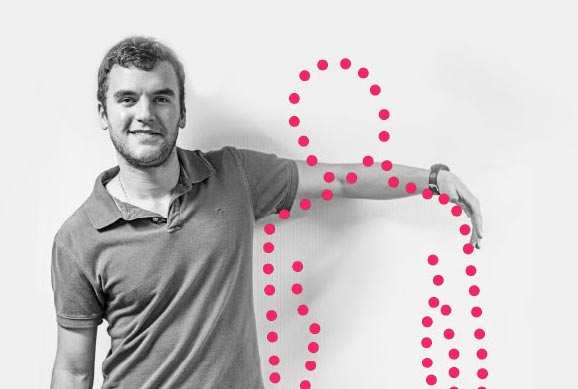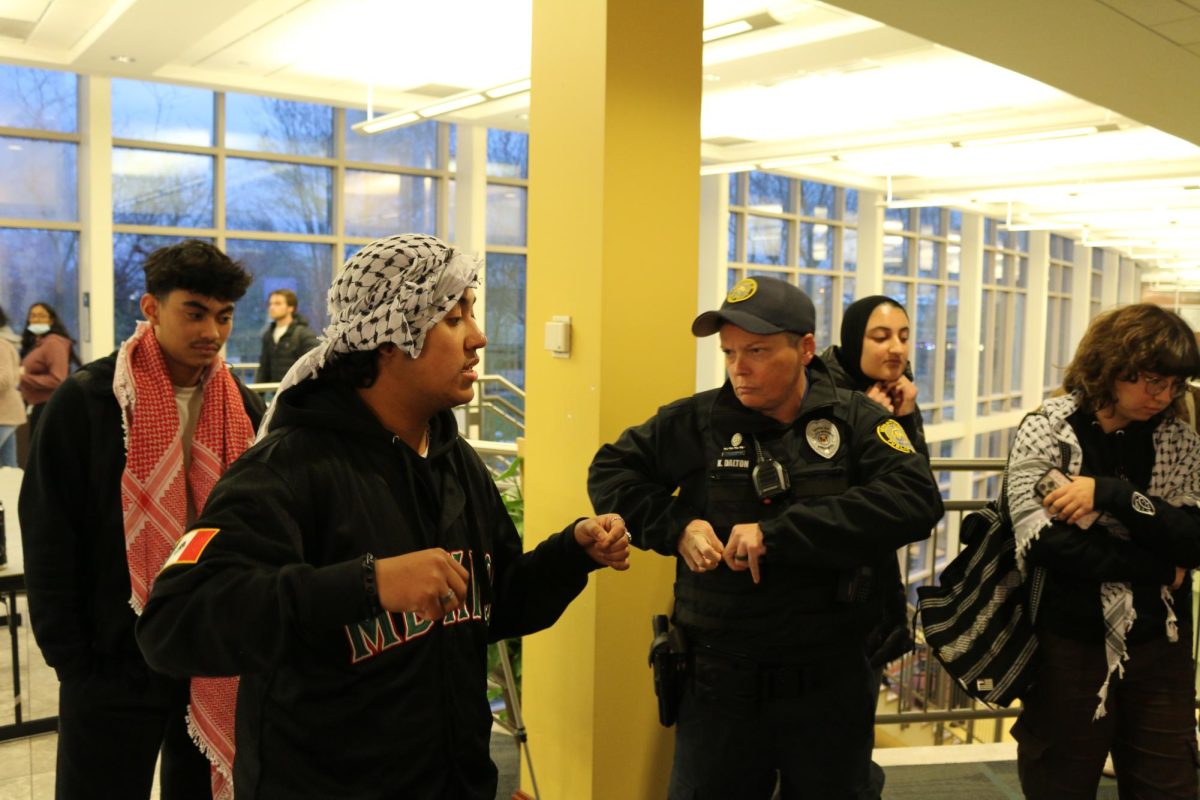
For Tyler Sondag, a marketing strategist in the John Cook School of Business’s Center for Entrepreneurship, an invisible creation has reaped very visible rewards and visible amounts of attention. The “Invisible Boyfriend” and “Invisible Girlfriend” apps, which he developed with a team during St. Louis Startup Weekend in 2013, have garnered significant media attention since their inception.
During Startup Weekend, ideas are pitched Friday night and teams are formed; participants work all day Saturday developing their ideas, and present them on Sunday. First, second and third place winners are then announced. Invisible Girlfriend came in first place at the 2013 Startup Weekend. Widespread media coverage ensued, with articles in St. Louis Business Journal, Riverfront Times, TIME and Mashable. Sondag woke up one morning to see his face on the front page of Buzzfeed. Comedy Central, NPR, Queen Latifah and Conan O’Brien also featured the app team. Only two weeks prior to speaking to the UNews, the team appeared on “The Today Show”.
The apps allow users to choose the appearance, name, age, hometown and personality of their invisible boyfriend or girlfriend.
Sondag initially entered the world of apps while still studying at SLU. “My freshman year I got the nickname “So Much Swag” on Facebook and…six and a half years later, that’s still my middle name [on Facebook]. Around sophomore year people started asking me how much “swag” I had, because people started knowing me by this nickname, and I couldn’t find a way to tell them how much “swag” I had. Then people started answering for me and saying ‘so much.’ And I said, well, there’s got to be a way that you can quantify how much “swag” somebody has—and I was joking, of course—but I came up with this idea at the time. It’s when the iPhone was just becoming popular, [and] when Twitter started to become pretty successful, and you had apps…I mean, everybody was doing apps at the time. Apps were very trendy, apps were very hot, and I started pitching this idea. That’s one of the fundamental pieces of entrepreneurship: if you have an idea, you start telling people about it, and that’s exactly what I did. Eventually I pitched to the right person, and the right person ended up giving me the money I needed to start the company. So I did an app called “Swagulator”…it calculated how much “swag” you had based on how you answered questions. That was really what got my foot in the door, especially in the tech world.”
From this beginning, Sondag embarked on a study of what he calls the “ecosystem” of entrepreneurship. “I love solving problems, and I love solving quirky, goofy things,” he said. “And that’s exactly what “Invisible Girlfriend” is, you know? Not everybody uses it, not every-body wants to use it, not everybody’s going to use it, but there are enough people out there to the point where it’s solving a significant problem for a significant amount of people.”
Sondag thinks St. Louis has significant potential within this “ecosystem.” “St Louis is going to be a hub for entrepreneurship,” he said. “It is already right now, but it’s not a major hub. It was just named the number-one place to start your startup by Popular Mechanics last month.” He foresees great advances in the city’s status within three to five years.
Sondag sees his current work in the Center for Entrepreneurship- on a campus situated at the center of this city with so much potential- as a way of harnessing students’ own potential. “One of the things that I’ve become more passionate about since I’ve started working for SLU is the fact that—if you look at a college campus, SLU included of course, there’s every single element and every single aspect of a business…anything that you need, is on campus already,” he said.
“It would be absolutely amazing to see what would happen if students said, ‘Oh! I have this idea, and what do I need to do in order to get this idea up and off the ground?’… If students started doing that, you wouldn’t have to look for jobs after school, because you could live wherever you wanted, you could do whatever you wanted to do…But people don’t think about that.”
Sondag wants students to grasp the universal nature of entrepreneurship. “A lot of students don’t realize that what they’re doing could have some kind of entrepreneurial tie,” he said. “You’d be amazed that when people graduate and they say, ‘Well, what am I going to do with this degree,’ or ‘how am I going to get a job,’ and that’s the thing with entrepreneurship…anything that is done, anything that has ever been done, has some form of entrepreneurship- when it comes to business at least. Even if you’re an English major, even if you’re a psychology major, even if you’re a history major or whatever, you’re still going to go work for what? A company. Everything is a company; everything is a business.”






